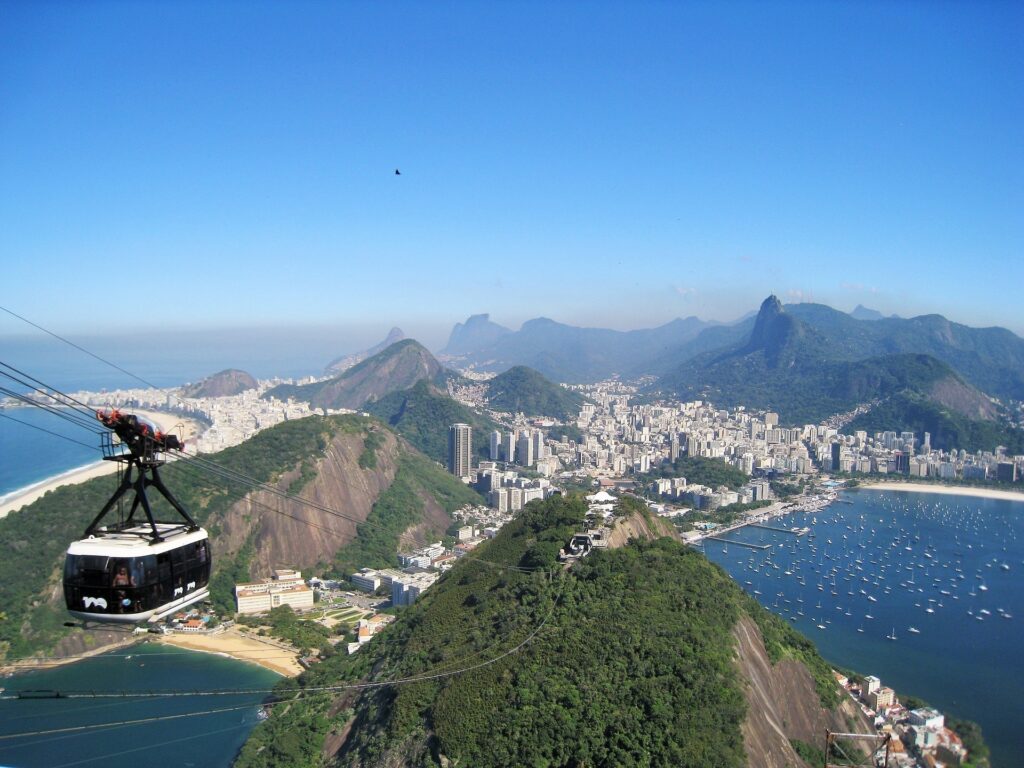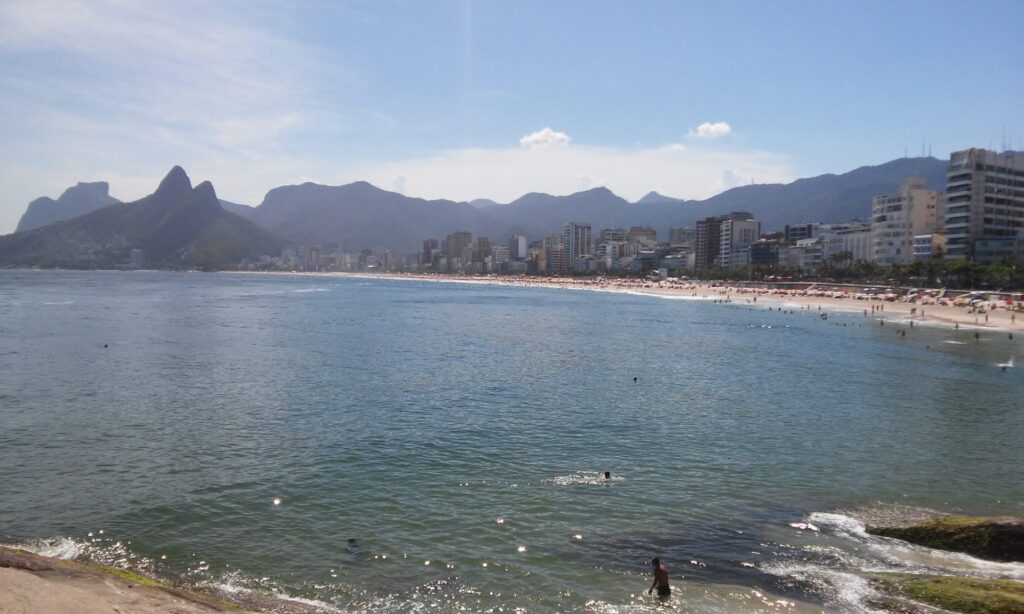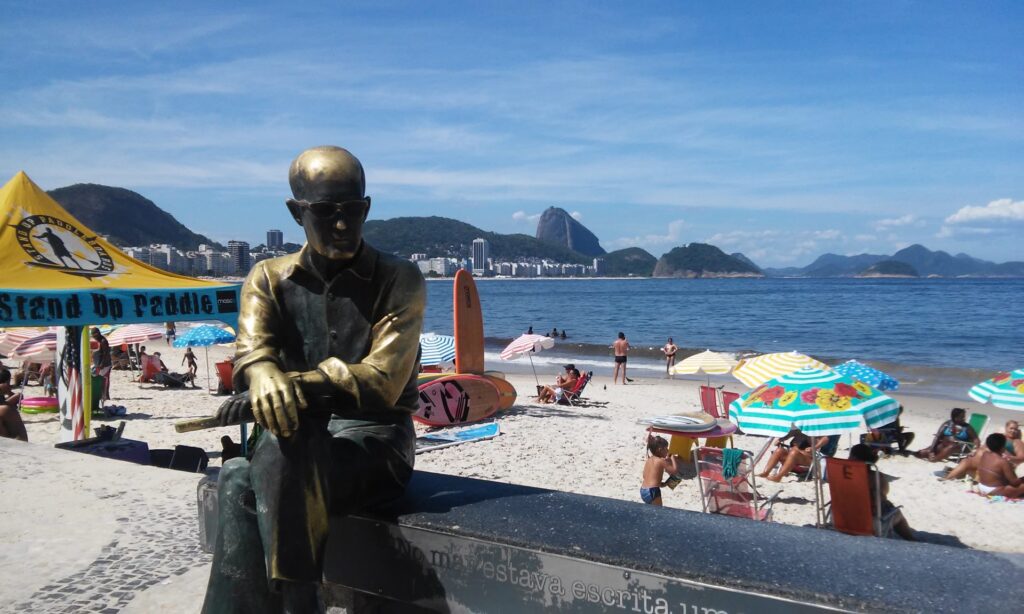A first timer’s guide to Rio de Janeiro
Atualizado em:
Find out in this post everything you need to know to visit Rio de Janeiro, Brazil, for the first time! Tips on how to get to and around the city, the most famous and iconic spots, and of course some little secrets to make your trip even more special.
Everyone knows that Rio de Janeiro is a wonderful place, but all its glory is not only due to its beaches. The city is naturally lush with its unique mix of sea and mountains that form an absolutely breathtaking and truly unique landscape. However, in Rio de Janeiro there are many things to do beyond the mesmerizing landscape. A lot of them. Remember that Rio is the second-largest city in Brazil and, besides tourism, is an important economic and cultural center.
I went to Rio for the first time when I was eight years old and since then, this Sao Paulo-born that writes to you has been completely in love with the city. I’ve been back countless times and never get tired. Rio de Janeiro is one of the Brazilian paradises – and it really is – that is frequented by both foreign and national tourists. With that in mind, I prepared these tips with the most indispensable places for a first visit to the city. The basics of the basics. Those things that, if you miss them, someone will say, “Well, you didn’t actually go to Rio!” – and with some little secrets thrown in, too.
Let’s go!

Inside view of Pão de Açúcar’s cable car.
History of Rio de Janeiro
Rio was officially founded in March 1, 1565, when the Portuguese expelled the French who settled on the shores of Guanabara Bay. It was in Rio that the Portuguese Royalty settled when they came to Brazil fleeing the Napoleonic invasion of their metropolis. After independence, the city became the first capital of the country and maintained its role until 1960, which was then transferred to the newly built Brasilia. Some symbols of these periods are important sights, such as the Catete Palace.
Rio nowadays
The Rio state capital is inhabited by about 6.7 million people and is home to some important companies, such as Petrobras, and government agencies, such as BNDES (Brazil’s National Development Bank). Also, part of the city has been declared a World Cultural Heritage Site by UNESCO.
It’s known that security is a problem in Rio, but under no circumstances should this be a barrier to exploring the city, especially if you come from a big city. I have lived in Sao Paulo for six years and have never felt any more unprotected there than here. In fact, in any Brazilian capital, I think the feeling of insecurity is about the same, even when we only step outside for a few minutes. Just in case, it’s always good to take those usual precautions: don’t wear any flashy jewelry, avoid walking with cameras and smartphones on display, and don’t go into certain areas at night. In short, keep your eyes open.

Walking on Ipanema’s boardwalk is a must-do!
How to get to Rio de Janeiro?
There are three ways to get to Rio (just like any Brazilian capital): by plane, bus or car. If you come by car, keep your eyes open because some of the city’s accesses have a somewhat dangerous track record, such as the famous ‘linha vermelha’ and ‘linha amarela’ (red and yellow lines). If you come by bus, the best option is to choose the ones that go to the Novo Rio bus station. It’s not so well located but the VLT, the city’s light rail system, access is super easy and the bus station itself has a very good structure (apart from the chaos that goes on in dates like the Carnival and holidays).
For those arriving by plane, Santos Dumont Airport is the most practical choice. It’s in a very central area of the city and it’s very easy to get to and from it by public transport, taxi or the ‘frescão’ (an air-conditioned bus that makes a few stretches around the city for a bit higher fare than the average city bus).
How to get around over there?
Using public transportation in Rio is pretty ok. The city has a few subway lines, and I always got around with it and buses very easily, just using Google Maps for guidance. The VLT also helps a lot in the downtown area. Car users should be careful, as there is no shortage of tourist stories that end up in tough neighborhoods because of their GPS. Taxis are abundant, and they know their way around the city like no one else. However, they are famous for hiking up prices for tourists (even Brazilian ones), so you have to be aware of that as a possibility. Uber and shared rides are also common, but keep your eyes open and make sure you’re getting in the right car- you don’t want to end up on a dangerous zone by mistake.

On sunny days, the Cristo Redentor is usually crowded.
Rio de Janeiro’s most obvious triad
If you want to visit these points that we’ll talk about next, the main tip is to plan in advance to pay better prices and avoid lines. The climb to Cristo Redentor can reach R$70 per person. The cable car ride costs R$55 at half price and R$110 at full, buying them on the spot. In both cases, it’s advisable to buy over the internet. I personally think the first time is worth the blow. But don’t forget to check the weather! I’ve climbed both Corcovado and the Pão de Açúcar on cloudy days and it was a complete waste of time and money because you can’t see anything at all.
Corcovado
On Corcovado, you can drive up to a certain point, and from there a van takes you to a higher point (you can book here in advance), and finally, elevators and escalators take you to the feet of Cristo Redentor. You can also climb from the lowest point with the vans or with the Trem do Corcovado, that has scenic views. On the other hand, I could never make an ideal visit, because when it wasn’t cloudy it was completely crowded with people. It is the main tourist spot of the city, after all, but if you don’t go there, have you even been to Rio?
Pão de Açúcar
The ascent to the Pão de Açúcar (which translates to Sugar Loaf on account of Brazil’s tradition as a sugar cane trader back in the day) begins at Praia Vermelha, where the first cable car takes you to the next hill. Then, from there, you take the second one, towards the highest hill and further into the middle of the sea. You can purchase your tickets at their ticket office in Praia Vermelha, and it includes both stretches of the ride, to go and return. Make sure to keep them as you will use the same tickets for all 4 trips (2 to go up, and 2 to get back down). The cable car starts running at 8 a.m. and goes on every 15-20min until 9 p.m. The last cable car to the top of Sugarloaf leaves at 7:50 p.m.
Like Corcovado, Pão de Açúcar is usually very crowded, but the ride is really cool, especially for children, and it provides panoramic views of the city.

Maracanã as seen from above, with Maracanãzinho beside it.
Maracanã
Now I have to confess that I never went to Maracanã. It’s just that I don’t care much for soccer and as the field is located a little out of the way, I was never interested. But if you, like most people who visit the city, want to see up close the stage of so many important disputes, it’s possible to take a guided tour or go by yourself. Prices are around R$ 50,00.
Rio de Janeiro: near the beach
Rio de Janeiro is first and foremost a seaside city, and the beach atmosphere that is everywhere is one of its main charms. So, as soon as you get to Rio, go for a walk on the boardwalk of Copacabana and Ipanema beaches and its surroundings. Walk by Copacabana Palace, take a very cliché picture next to the Drummond or Clarice Lispector statues (both famous Brazilian writers) and applaud the sunset at Pedra do Arpoador (a very local tradition).

Watching the sunset at Pedra do Arpoador is a city classic.
Copacabana
At the very end of Copacabana beach is the Forte de Copacabana, or Copacabana Fort, which was a strategic point for many years and the scene of a lieutenant revolt in 1922. Today, the fort is deactivated and is a cultural center for the Army. Access to the fort costs R$6,00. Inside, there’s a themed museum and, in the end, a very interesting view of Guanabara Bay.
In Copacabana, have a traditional caipirinha (tre brazilian cocktail made with cachaca and limes) at one of the region’s many bars and have a juice or açaí in one of the also abundant juice houses.
Leblon and Ipanema
Like I said, the beachfront neighborhoods are super nice, full of shops, restaurants, bars and tree-lined streets that will make you want to move there on the spot. And speaking of bars, the Garota de Ipanema bar is obviously located here. I actually think it’s a bit of a touristy show, but since you’re in the neighborhood, why not go ahead and check out where Toquinho and Vinícius de Moraes, two of the most prominent Brazilian musicians, composed one of Brazil’s most iconic songs.
In Ipanema, there’s also a hippie flea market on Sundays in General Osorio square. It’s nothing that can’t be skipped, but it’s a nice walk. It’s open from 7 am to 7 pm since 1968.

Carlos Drummond de Andrade, one of the greatest Brazilian poets of all time. The honored poet was from Minas Gerais but spent much of his life in Rio.
A few basic secrets
At the foot of the Pão de Açúcar, Urca’s wall is the place to have a ‘pastél’, a traditional, deep-fried Brazilian delicacy, and drink a beer watching the sunset. This is the perfect tour to get the whole vibe of Rio de Janeiro, admiring a beautiful view without being surrounded by tourists at all sides.
Cariocas may disagree with me, but for me, a trip to Rio de Janeiro has to include a happy hour at Boteco Belmonte. End your travel at the bar, which has barrel-shaped stools and is famous for its ’empadas’, sort of like stuffed mini-pies. The house is originally from the Botafogo neighborhood but has already set up shops in other places, such as downtown and Ipanema.
With this itinerary, you can easily fill a weekend in the Wonderful City. If you want to enjoy a little more, check out more tips here.






Deixe seu comentário